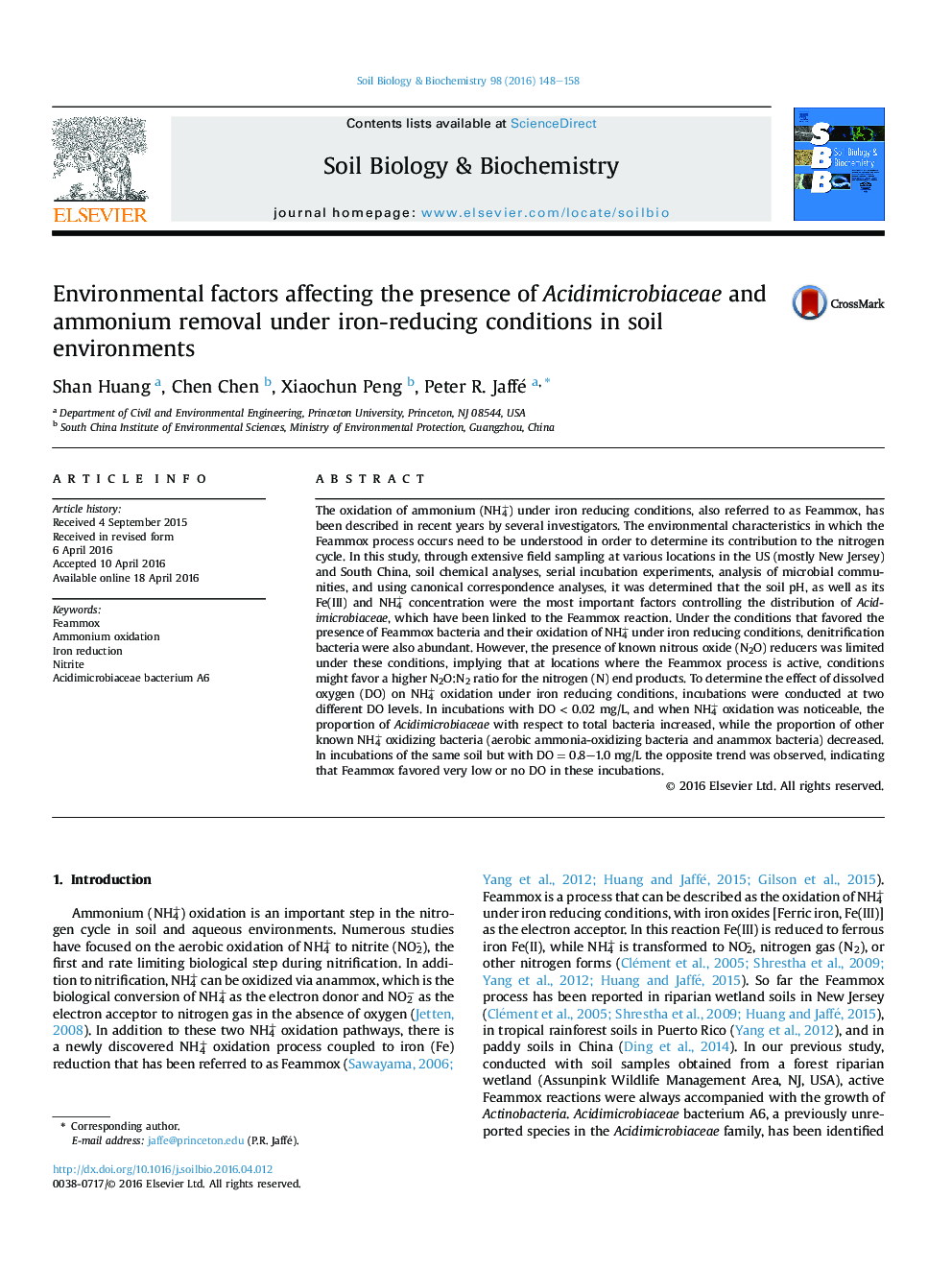| Article ID | Journal | Published Year | Pages | File Type |
|---|---|---|---|---|
| 8363551 | Soil Biology and Biochemistry | 2016 | 11 Pages |
Abstract
The oxidation of ammonium (NH4+) under iron reducing conditions, also referred to as Feammox, has been described in recent years by several investigators. The environmental characteristics in which the Feammox process occurs need to be understood in order to determine its contribution to the nitrogen cycle. In this study, through extensive field sampling at various locations in the US (mostly New Jersey) and South China, soil chemical analyses, serial incubation experiments, analysis of microbial communities, and using canonical correspondence analyses, it was determined that the soil pH, as well as its Fe(III) and NH4+ concentration were the most important factors controlling the distribution of Acidimicrobiaceae, which have been linked to the Feammox reaction. Under the conditions that favored the presence of Feammox bacteria and their oxidation of NH4+ under iron reducing conditions, denitrification bacteria were also abundant. However, the presence of known nitrous oxide (N2O) reducers was limited under these conditions, implying that at locations where the Feammox process is active, conditions might favor a higher N2O:N2 ratio for the nitrogen (N) end products. To determine the effect of dissolved oxygen (DO) on NH4+ oxidation under iron reducing conditions, incubations were conducted at two different DO levels. In incubations with DOÂ <Â 0.02Â mg/L, and when NH4+ oxidation was noticeable, the proportion of Acidimicrobiaceae with respect to total bacteria increased, while the proportion of other known NH4+ oxidizing bacteria (aerobic ammonia-oxidizing bacteria and anammox bacteria) decreased. In incubations of the same soil but with DOÂ =Â 0.8-1.0Â mg/L the opposite trend was observed, indicating that Feammox favored very low or no DO in these incubations.
Related Topics
Life Sciences
Agricultural and Biological Sciences
Soil Science
Authors
Shan Huang, Chen Chen, Xiaochun Peng, Peter R. Jaffé,
